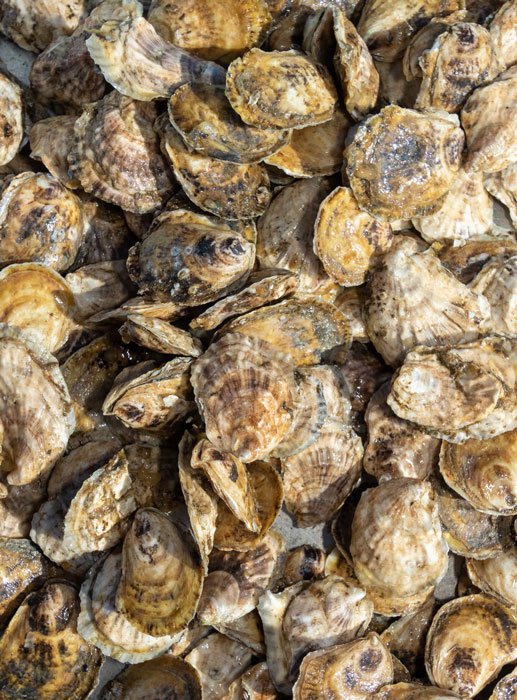Gulf of Maine 2050 International Symposium Report
Announcements | Nov 27, 2020
After the success of the Gulf of Maine 2050 International Symposium in November 2019, the symposium leaders collaborated on a Climate Outlook and Action report summarizing the findings of the symposium and how the interdisciplinary themes that were discussed could impact the Gulf of Maine’s environment, communities, and economies in the future.

In November 2019, several hundred community, governmental, and business leaders from across New England and the Canadian Maritime Provinces joined together with leading scientists to discuss the environmental and societal changes anticipated for the Gulf of Maine as we approach 2050. The Gulf of Maine 2050 International Symposium’s focus on the year 2050 was not selected at random — it is around this time that the Intergovernmental Panel on Climate Change’s (IPCC) carbon emission scenarios begin to diverge from the most severe climate impacts to lesser, more manageable ones. This means that the choices we make today and over the next several decades have real power in shaping the state of the world we inhabit 30 years from now and beyond. “The decisions that we make between now and 2050 really determine the trajectory that we are on with regard to limiting global warming,” says Ko Barrett, Vice Chair of the IPCC.
But global scientific reports alone can’t inform those decisions on the local level, Barrett notes. That’s why work in the Gulf of Maine is so important to identifying the actions needed in this place at this time to move toward a healthier future.
Taking effective action will also require coordinated and efficient collaboration between groups that may not have typically worked together in the past, says Robert Stephenson, an ecologist with Fisheries and Oceans Canada. “We need to collaborate, we can’t do this in our usual way of doing business,” he says. “We need to work across silos.”
Throughout the Gulf of Maine, groups have already begun to work together to innovate adaptation strategies on the local and regional level. We’ve highlighted some of their stories here, along with insights and information we think will help move the Gulf of Maine toward a brighter and more manageable 2050.

Key Takeaways
- Sea level rise and changes in precipitation will lead to increased depth and frequency of flooding, leading to numerous damaging consequences for coastal communities. At the local level, communities are working to pinpoint areas most susceptible to flooding and designing nature-based solutions (like sand dunes and marsh grasses) to dampen negative impacts.
- Marine species, especially commercial shellfish, will grow more slowly and become less likely to survive as ocean waters acidify. Aside from curbing fossil fuel emissions to slow the rate of acidification, research is indicating that farmed kelp beds can consume excess carbon dioxide and lessen the acidity of ocean water. This can even happen at a hyper-local level by adding kelp beds to commercial shellfish farms along the coast.


- Changes to ocean temperature and circulation could modify the habitats of more than three-quarters of target commercial fish species in the Gulf of Maine, allowing new, invasive species to enter the region. Although such shifts may be unavoidable, commercial fishers can adapt by catching new species — for example, lobster fishers in Cape Cod have begun selling delicious Jonah crab alongside their lobster catch as it becomes more common in their traps.
- Collaboration and communication are key — climate research findings must be communicated clearly so that policy makers and other members of the public can use that information to make informed decisions at the local level. Researchers must also consider the needs and knowledge of people outside scientific spheres to make sure that they are asking the most relevant research questions.

Explore the Summary Report
A new report summarizes the findings of the symposium and how the interdisciplinary themes that were discussed could impact the Gulf of Maine’s environment, communities, and economies in the future.
Read Next
-
![Climate Center Names First Director]()
Climate Center Names First Director
Dr. Dave Reidmiller joined us in August as director of our new climate center. In his role, Dr. Reidmiller will leverage nearly two decades of …
Tidings
-
![The Merlin: Updates to our New Research Vessel]()
The Merlin: Updates to our New Research Vessel
What began as a harpoon tuna fishing vessel, generously donated to GMRI by David Linney and the Linney family, is now a state of the …
Announcements
-
![Modeling Future Fisheries]()
Modeling Future Fisheries
A new research project led by Dr. Lisa Kerr aims to connect climate, fish, and fisheries models to help fisheries managers make climate-informed decisions.
Tidings
-
![Virtual Experience for Undergraduates]()
Virtual Experience for Undergraduates
While the outbreak of COVID-19 has led many REU programs to cancel their summer plans, we have chosen to move forward with our program virtually, …
Announcements



